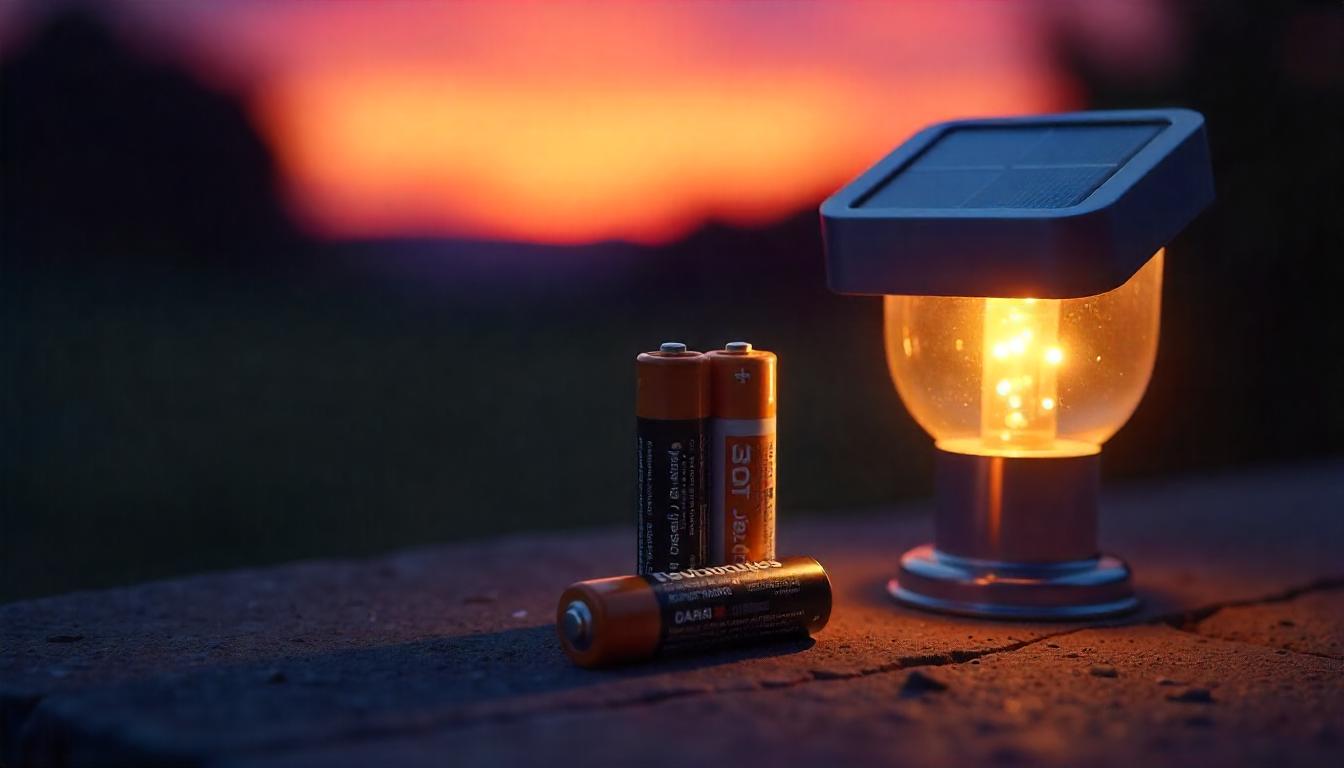Yes, replacing rechargeable batteries in solar lights is often worth it and can significantly enhance the lights' longevity, performance, and brightness. Solar lights are designed to rely on rechargeable batteries to store solar energy during the day and release it at night. Over time, however, the performance of these batteries degrades due to regular charging and discharging cycles, and replacing them can extend the life and effectiveness of the lights. Here’s a detailed look at why it’s beneficial, when to replace the batteries, and what to consider when choosing new ones.
Why Replacing Rechargeable Batteries in Solar Lights Is Beneficial
- Restores Lighting Performance: Over time, the capacity of rechargeable batteries diminishes, meaning they can hold less charge. If your solar lights have become dim or don’t last as long through the night, new batteries can help restore their brightness and duration.
- Cost-Effective Solution: Solar lights are generally affordable, but purchasing new ones to replace dimming lights can add up. Replacing the batteries is often much cheaper than buying new lights and can restore them to near-original performance.
- Eco-Friendly Choice: Replacing batteries instead of discarding solar lights helps reduce electronic waste. By keeping the lights in service longer, you contribute to environmental sustainability by minimizing the resources needed to manufacture new lights.
- Maintains Energy Efficiency: New rechargeable batteries are more efficient at holding and delivering power, ensuring the solar lights continue to work efficiently, making the most of daily solar charging.
Signs It’s Time to Replace the Batteries in Your Solar Lights
If you’re unsure whether to replace the batteries in your solar lights, watch out for the following signs:
- Reduced Brightness: If the light output is significantly dimmer than it used to be, it could be a sign that the batteries are struggling to store enough power.
- Short Lighting Duration: If your solar lights used to last until dawn and now only stay on for a few hours, the batteries may no longer hold a full charge.
- Flickering Lights: Intermittent flickering could indicate that the batteries are unable to sustain continuous output.
- Unresponsive Lights: If the solar light stops working altogether or only works sporadically, the batteries could be fully depleted and in need of replacement.
If any of these symptoms are present and the solar panel appears to be functioning properly, replacing the batteries is likely the solution.

Choosing the Right Replacement Batteries for Solar Lights
When selecting replacement batteries, consider the type of battery that is compatible with your solar lights, as well as factors such as capacity and lifespan
- Battery Type:
- Nickel-Metal Hydride (NiMH): These are popular for solar lights because they have a high capacity and are more environmentally friendly than NiCd (Nickel-Cadmium) batteries. NiMH batteries are generally a reliable choice and offer good performance across varying temperatures.
- Nickel-Cadmium (NiCd): NiCd batteries are known for their durability, especially in colder climates, but they contain toxic cadmium and are less environmentally friendly.
- Lithium-Ion (Li-Ion): These batteries have higher energy density, meaning they store more power. However, they may not be compatible with all solar lights due to voltage differences.
- Lithium Iron Phosphate (LiFePO4): Another lithium-based option, these batteries are safe and durable but more expensive and less common in standard AA sizes for solar lights.
2. Capacity (mAh): Battery capacity, measured in milliamp hours (mAh), indicates how much charge a battery can hold. Higher capacity batteries will power lights for longer. Most solar lights use batteries ranging from 600 mAh to 2000 mAh, depending on the light’s requirements.
3. Voltage: Ensure the replacement batteries match the original batteries in voltage. Most solar lights use 1.2V AA rechargeable batteries. Using incompatible batteries can damage the lights or cause malfunction.
4. Temperature Performance: If your solar lights are exposed to extreme temperatures, consider NiCd or LiFePO4 batteries, as these types are generally better suited for harsh conditions.
Steps to Replace Rechargeable Batteries in Solar Lights
- Turn Off the Solar Light: If the light has a power switch, turn it off before beginning the replacement process.
- Open the Battery Compartment: Access the battery compartment by removing any screws or clips. Be careful not to damage the compartment or wiring.
- Remove the Old Batteries: Take out the old batteries and dispose of them responsibly. Most communities have recycling centers that accept batteries for safe disposal.
- Insert New Batteries: Place the new batteries into the compartment, ensuring they are oriented correctly. Follow the polarity markings to avoid any issues.
- Reassemble the Solar Light: Secure the battery compartment and turn the light back on. Place the solar light in a sunny location and allow it to charge fully.

Maximizing the Lifespan of Rechargeable Batteries in Solar Lights
Once you’ve replaced the batteries, there are several steps you can take to extend their lifespan and get the most out of your solar lights:
- Regular Cleaning: Dirt, dust, or debris on the solar panel can reduce the amount of sunlight reaching the battery. Clean the panels every few weeks to ensure they’re capturing as much sunlight as possible.
- Optimal Placement: Place the lights where they’ll receive maximum sunlight throughout the day. Avoid areas that are shaded or partially covered, as this can prevent the batteries from charging fully.
- Seasonal Storage: In colder climates, solar lights may not function well during the winter months. If you’re not using the lights, bring them indoors and store them in a dry, moderate environment. This can protect the batteries and extend their life.
- Battery Rotation: If you have multiple solar lights, consider rotating the batteries every few months. This practice can help to ensure even usage and potentially extend battery life.
- Avoid Overcharging: While most solar lights are designed to prevent overcharging, removing the batteries occasionally and storing them inside can be a good practice in peak summer seasons when sunlight is most intense.
Conclusion: Is It Worth Replacing Rechargeable Batteries in Solar Lights?
Replacing rechargeable batteries in solar lights is usually a worthwhile investment, as it can rejuvenate the lights and keep them working efficiently for another season or two. It’s a cost-effective solution that restores the lights' brightness, extends their functional hours, and minimizes waste by reducing the need to buy new lights.
By selecting the right type of battery and following maintenance best practices, you can enhance the performance of your solar lights, ensuring that they continue to illuminate your outdoor spaces sustainably and reliably.


































Leave a comment
This site is protected by hCaptcha and the hCaptcha Privacy Policy and Terms of Service apply.